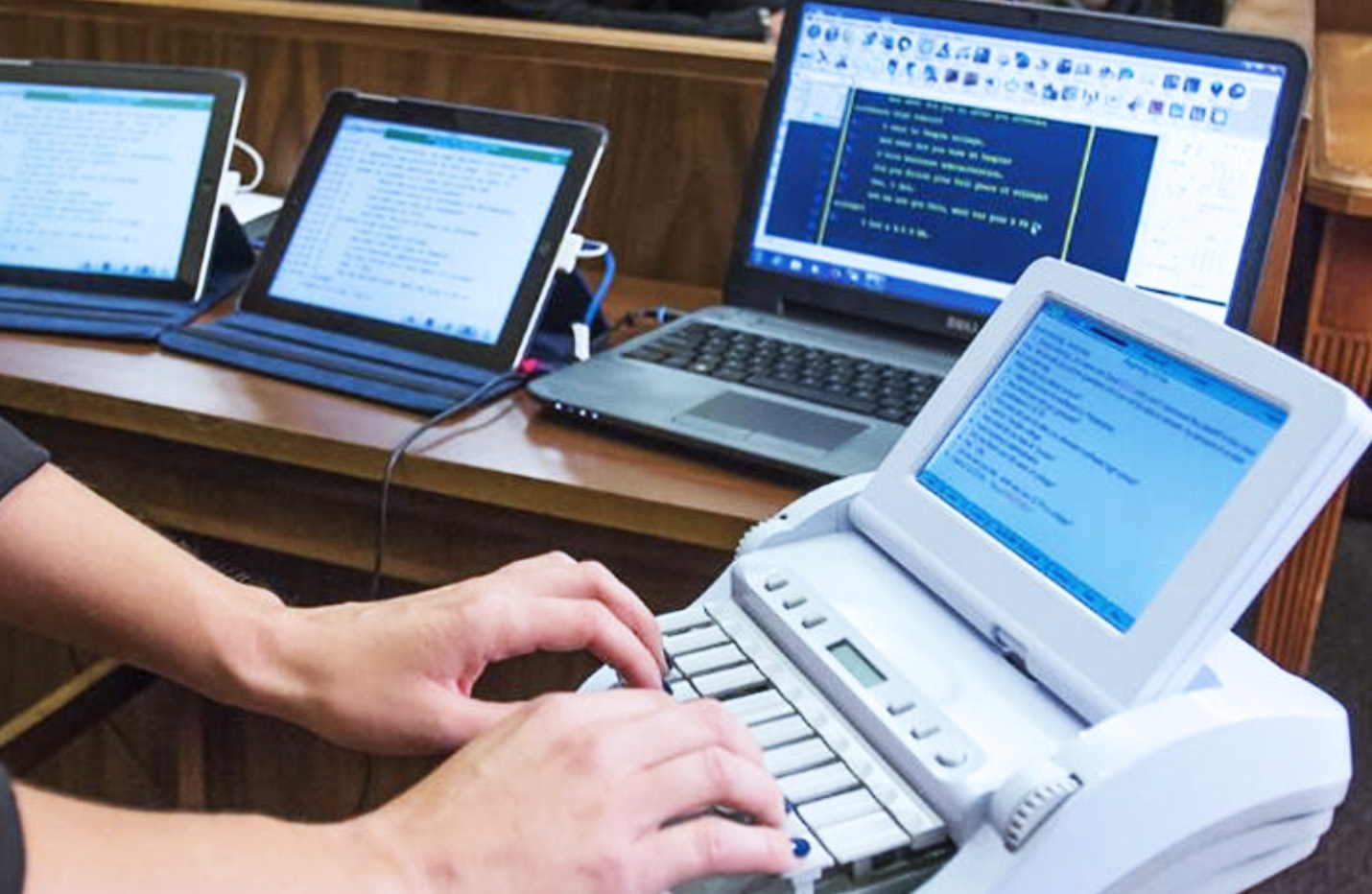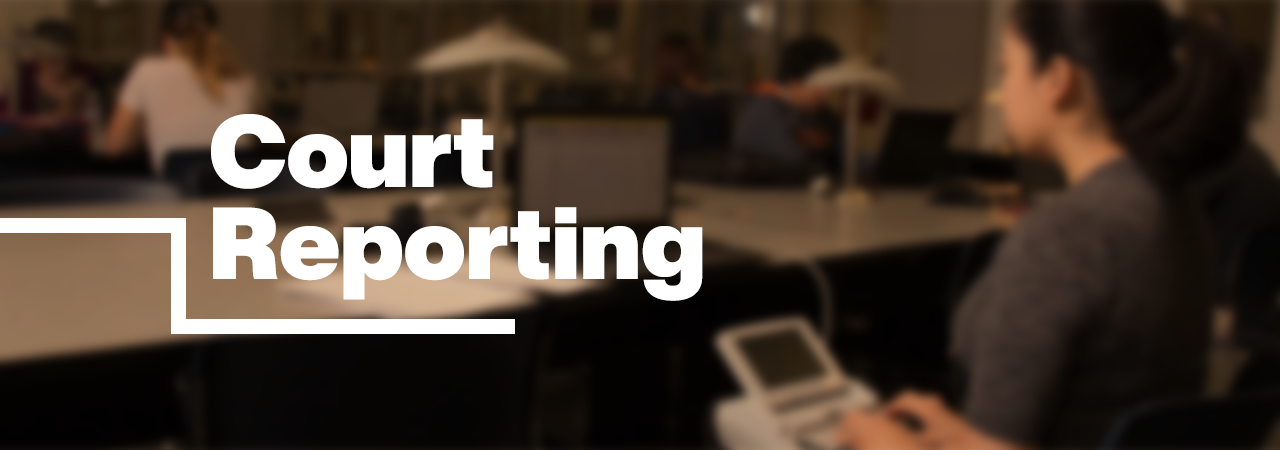Just How Court Reporting Functions: A Step-by-Step Guide to the Lawful Process
Court reporting is a crucial part of the legal system. It involves an organized procedure that ensures accurate documents of procedures. From preparation to the last shipment of transcripts, each action is necessary. Comprehending how court press reporters run offers understanding into the integrity of lawful records. The subtleties of their work can greatly affect legal end results, triggering questions regarding the methods and modern technologies they utilize. What are the specific methods that define this career?
The Role of Court Reporters in the Legal System
Stenotype reporter play a vital role in the lawful system by providing trusted and precise records of court procedures. Their job assurances that every talked word during depositions, trials, and hearings is documented, which is essential for preserving a main record of occasions. This transcription is essential for appeals, as it enables greater courts to evaluate the process and identify if any kind of errors were made during the test.
In addition, court press reporters aid in protecting the honesty of the legal process by developing verbatim records that can be referred to by legal representatives, judges, and various other celebrations entailed in an instance. They frequently utilize customized devices and software program to record discussion with precision. Past the courtroom, their transcripts can function as vital historical records, offering understanding right into judicial process and the lawful system's functioning. Inevitably, court reporters add substantially to openness and liability in legal matters.
Planning for a Court Reporting Session
Prep work is essential for an effective court reporting session, as it assures the precision and performance of the transcription procedure. Stenotype reporter start by reviewing case materials, consisting of pleadings and witness checklists, to acquaint themselves with the terms and context. They likewise ensure that they have the needed devices, such as steno makers, notebooks, and back-up devices, on-line.
Before the session, interaction with lawful teams is important. Reporters frequently clarify any kind of details demands relating to formatting or favored terminology. Additionally, they might set up to satisfy with attorneys or witnesses to go over the procedures and confirm the schedule. Getting here early to establish the tools enables troubleshooting potential technological problems. Overall, thorough prep work not only boosts the press reporter's confidence yet likewise contributes considerably to creating a clear and accurate record of the lawful procedures.

Capturing the Document: Methods and Equipment
Utilizing sophisticated techniques and trustworthy equipment, court press reporters carefully record the spoken word during lawful proceedings. They utilize stenography, an approach including a specialized equipment that allows them to kind numerous sounds all at once, thus recording discussion in real time. This maker, called a steno keyboard, is furnished with tricks that represent words and syllables, making it possible for swift and accurate input.
In addition to stenography, stenotype reporter might utilize audio recording gadgets as supplementary tools. These devices work as back-ups, making certain that no crucial info is shed throughout proceedings. Some press reporters include software that enhances their transcription efficiency, providing functions such as voice recognition and automated formatting.
Appropriate positioning and emphasis are vital; press reporters need to keep focus on all audio speakers, recording subtleties and inflections that add to the document. With a mix of skill and innovation, stenotype reporter support the stability of the legal process by ensuring a comprehensive and accurate record of events.
Recording the Process
Recording the procedures requires stenotype reporter to transform talked discussion into written message with exceptional precision and rate. This process generally takes place immediately after the recording has actually been caught, utilizing specialized software that permits smooth transcription. Court reporters must pay attention attentively to the audio, making certain that every pause, word, and inflection is properly stood for in the transcript.
They commonly rely upon shorthand systems, personal transcription abilities, and advanced technology to facilitate this task. The setting in which they work can be busy and often chaotic, as legal proceedings often involve numerous speakers and technological jargon. Stenotype reporter need to also preserve concentration to catch subtleties in tone and context that may be essential for the lawful record. Eventually, the accuracy of the transcription is vital, as it offers as an official record for future reference in lawful proceedings.
Examining and Modifying the Transcript
The procedure of reviewing and modifying the records is vital for making sure precision in court reporting. Court reporters commonly collaborate with attorneys to clear up any kind of ambiguities and verify the accuracy of the recorded statements. This partnership is crucial for maintaining the stability of the lawful document.
Importance of Accuracy
Accuracy acts as the keystone of reliable court reporting, as even minor errors can considerably modify the definition of lawful proceedings. The reviewing and modifying process is important in making certain that records mirror the spoken word with fidelity. Court reporters carefully confirm names, technical terms, and legal jargon to preserve precision. This interest to detail helps avoid misunderstandings that might impact situation results. Precision cultivates trust fund amongst lawful experts, clients, and the court, strengthening the integrity of the judicial system. Errors can lead to disputes or allures, making it imperative for press reporters to fine-tune their work thoroughly. Ultimately, the search of precision not only enhances the integrity of the records however also promotes the requirements of the legal profession.
Cooperation With Attorneys
Collaboration in between court press reporters and attorneys is crucial throughout the examining and editing stage of transcript production. This procedure ensures that the last paper accurately mirrors the spoken word and sticks to lawful standards. Lawyers typically evaluate records for particular terms, context, and any type of potential mistakes that pop over to this site could affect the case. Stenotype reporter rely upon lawyers' know-how to clarify unclear sections or emphasize crucial declarations. Effective interaction is crucial; lawyers may give feedback or demand corrections, which court press reporters must attend to promptly. This collaboration not just enhances the high quality of the records but likewise adds to a smoother legal procedure. Inevitably, collaborative efforts bring about a accurate and trustworthy document, essential for legal process and future referrals.
Delivering the Last Records to Customers
Upon completion of the transcription process, court reporters thoroughly prepare the last document for delivery to their clients. This final transcript goes through detailed proofreading to guarantee accuracy, as any type of errors might considerably influence lawful process. Stenotype reporter format the document according to the particular demands set forth by the clients or legal firms, including pagination, indexing, and any type of needed exhibitions.

Finally, court press reporters might supply a cover letter summing up essential details and offering further aid if required. This complete method guarantees that customers obtain a refined, precise, and easily accessible transcript, important for their lawful demands.
Often Asked Questions
What Credentials Are Needed to Become a Court Press Reporter?
To end up being a court reporter, people usually need a high college diploma, completion of a court reporting program, and certification or licensure, relying on state demands. durham court reporting. Proficiency in shorthand and modern technology is likewise vital for success
How Lengthy Does It Take to Full Court Reporting Training?
Usually, finishing court reporting training takes in between 18 months to four years, depending upon the program's intensity, the trainee's pace, and the certain requirements of the territory in which they wish to practice.

What Is the Typical Wage of a Court Reporter?
The typical wage of a stenotype reporter differs by location and experience, usually varying from $45,000 to $100,000 annually (durham court reporting). Elements such as expertise and demand can considerably affect their profits in various areas
Are Court Reporters Required to Have Qualification?
Stenotype reporter are usually called for to obtain certification, which ensures they have the essential skills and knowledge for precise transcription. Accreditation needs can differ by state or territory, reflecting expert criteria within the lawful area.
Can Court Reporters Job Remotely or Freelance?
Stenotype reporter can work remotely or freelance, supplying adaptability in their career. Several utilize innovation to record process from numerous areas, enabling varied possibilities in the lawful field while keeping a work-life balance.
Court reporters play a crucial function in the legal system by giving exact and reliable transcripts of court process. In addition, court press reporters aid in maintaining the honesty of the legal process by creating verbatim documents that can be referred to by legal representatives, judges, and other parties entailed in a situation. Using Read Full Report advanced strategies and trusted tools, court reporters thoroughly catch the spoken word during lawful procedures. Court reporters have to likewise maintain focus to catch nuances in tone and context that might be vital for the legal document. To end up being a court press reporter, people Continue generally require a high institution diploma, completion of a court reporting program, and qualification or licensure, depending on state requirements.